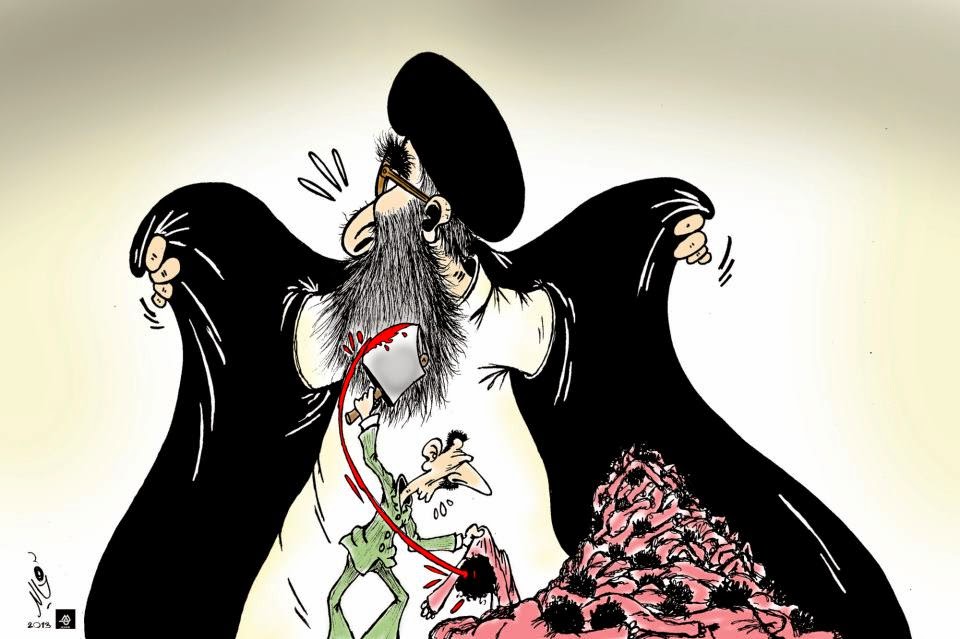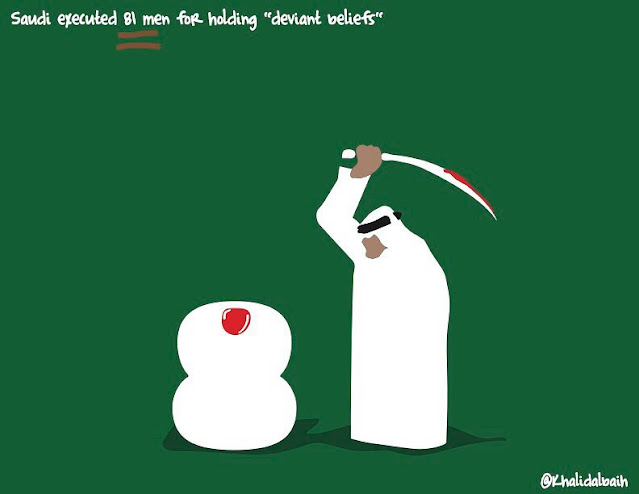Communities of Meaning
When I was preparing the blogpost on Doaa Eladl on the danger of never returning home in spite of all good intentions the other day, the story had in fact another layer to it: Tony, writing from Beirut, found himself commenting on two situations at very same time due to a sudden unrest in the neighborhood, possibly a bomb? Yet, neither of them hesitates in what they do - they create and discuss art.
This is such a moving example of when art matters. I cannot help comparing their approach to the art debate around these parts, Northernmost Europe, for the past months, where the insistence on art as provocation has taken another round.
The Swedish art critic Robert Stasinki discussed the matter in the October edition of the magazine published by Konstnärernas Riksorganisation Konstnären. On the one hand we have the Wittgensteinian language classification, which has a popular appeal in its simplicity that the main ingredient to art is the self-pronounciation of someone declaring him- or herself to be an artist creating art. And then we have the seemingly more elitist approach in which art is something created within a social system of interlinked, verifying institutions and individuals, a "community of meaning" according to the social anthropologist Anthony P. Cohen. Art is not a result of a single resolution or construct of language, but an ongoing - and I am still quoting Stasinski - process of validation on what is relevant.
The social approach could be seen as a way of keeping out. The established galleries in Egypt pre-2011 for instance favoured the conceptual art and were unattainable to many if not most of the young artists. They chose in turn the street as their canvas and exhibitional space alike, creating a stellar chapter in contemporary art history with Aya Tarek and Ganzeer as some of the first and most notable. Aya Tarek constantly stresses that her art is not part of a political agenda; it is critical, but not propaganda, while Ganzeer has used the term "Concept Pop" to visualize the transition from the galleries onto the street, an art still conceptual in character void of the artist's ego, tackling the concerns of daily life. All of this, as he continues is as yet but in its initial form. Institutions are dialogues and debates, not walls.
Cartoon art, because of course I have to bring in cartooning, does the very same thing too on a daily basis. The social approach is not about keeping out, but seeing art as inclusion in a wider discussion in society beyond the single artwork.
 |
| Bob Katzenelson, Feeling better now..., October 27, 2014. |
Just take this one on the Danish politician, Mogens Camre, who has been featured before on this blog. Back then for his hate speech merely months before Breivik committed mass murder in Norway. Camre is at it again, the quick, nasty, stupid remark on Facebook, then backing out and deleting when told to do so by his own party members. Only, he has done this so many times and we know he shall do so again.
What he said? "I had a strange feeling when I saw the news on DR1 this evening. A journalist, who seems to have come from the Middle East interviews a Minister of Integration, who is an Indian".
The Waning of the Roman Empire, sorry, the constant declamation on a Danish culture vanishing before our very eyes, insisting to have the keys to right and wrong. And just like their Swedish counterpart Sverigedemokraterne they take the anthropological approach to art as culture.
So this is not so much about him as the outlook he represents, not least as a party member. The main thing here is the greenish vomit. The angle underlines that the two on the TV-screen are the normality in jacket and tie, whereas in the foreground we have someone wrought on his own anger. The dripping, seeping vomit is not so much writing off the trolling of social media, as seeing the social media as a community of possible meaning, to elaborate on Cohen. They are what we make of them each day and of which cartoons play their part.
The cartoonist creates a visual memory of what certain wish most to pretend they never did. The spew.
The cartoon is courtesy of Bob Katzenelson and must not be reproduced without his permission.

